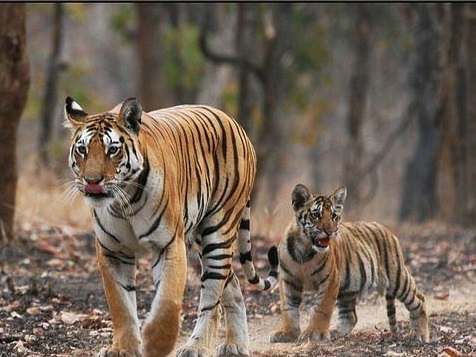On the occasion of International Tiger Day, we want to highlight that tigers are facing a global threat of extinction. There are just 4000 tigers left in wild forests and tiger reserves. India hosts 70 percent of the global tiger population, with a total count of 2967; the rest live in Russia, the U.S., and some south Asian countries.
International Tiger Day was initiated back in November 2010 during the Tiger Summit held in St.Petersburg in Russia. The event was attended by 500 representatives from the 13 Tiger hosting countries along with the World Bank Global Tiger Initiative organization and other institutions working for the conservation of tigers.
In the last decade, the population of tigers has seen a decline in number all around the world. The reduced number of tigers led to the initiation of the Tiger Summit, where countries set goals to create a global system to restore and preserve tigers.
World Bank’s Global Tiger Initiative (GTI) initiated the Global Tiger Recovery Program (GTRP) with an aim to double the tiger population by 2022. Tiger Range Countries: India, Nepal, Bangladesh, Myanmar, Indonesia, China, Laos, Malaysia, Thailand, Cambodia, Vietnam, and Russia have come up with a portfolio of 80 priority activities to reach this goal.
However, most of these countries didn’t show good results in their work to preserve and increase the tiger population. India is the only country to see a rise in the tiger population of and revive its habitation.
Tiger habitation plays an important role in growing the population. Nearly 93 percent of the historical tiger lands are now turned in to cities and towns. Thus developing a tiger habit plays crucial role in safeguarding the animal and increasing its number.
Union Environment Minister Prakash Javadekar and Minister of State Babul Supriyo ahead of the Global Tiger Day 2020 released an updated report of India’s Tiger Survey from 2018. The number of tigers remains unchanged from the count announced last year.
The report suggests that the number of tigers in India in the span of four years, from 2014-18 has increased by 741. In 2014 the tiger count across the country stood at 2,226. The new count released puts the Tiger population at 2,967, unchanged from 2019.
“We have 70% of the world’s tigers. We should be proud of the fact that we are leading the world in terms of ensuring that their population increases. This is India’s soft power,” said Javadekar during the launch of the report.
As per the report, India has five zones that work for the conservation of Indian tigers.
Central Indian Landscape and easter ghats, Shivalik Hills and Gangetic Plains Landscape, North East Hills and Brahmaputra plains Landscape, Western ghats Landscape, and the famous Sunderbans.
According to the latest release- Central Indian Landscape and eastern ghats that had 688 tigers in 2014 increased to 1033 in 2018. Western ghats Landscape had a total of 776 in 2014 in 2018 the number increase to 981.
North East Hills and the Brahmaputra plains Landscape’s tiger count rise from 201 in 2014 to 2019 in 2018. The Shivalik Hills and Gangetic Plains Landscape tiger number in 2014 was 485 which increased to 646 in 2018 and Sunderbans had 76 in 2014 now the number rise to 88 in 2018
During the launch event, Javadekar announced that his Ministry is working on a programme which will focus on providing water and fodder to animals in the forest. This will help in reducing human-animal conflict which is a major cause of animal deaths in the country.
For the implementation of the new programme, the government will use the Lidar-based survey technology for the very first time. This technology helps in measuring the distance of illuminating the target with the help of laser light and measures the reflection with a sensor.
Coming to the states, Madhya Pradesh has the highest number of tigers with a total count of 526. Followed by Karnataka with 524 and then Uttarakhand which hosts 442 tigers. Chhattisgarh and Mizoram are the two states that witnessed a decline in the tiger population.

